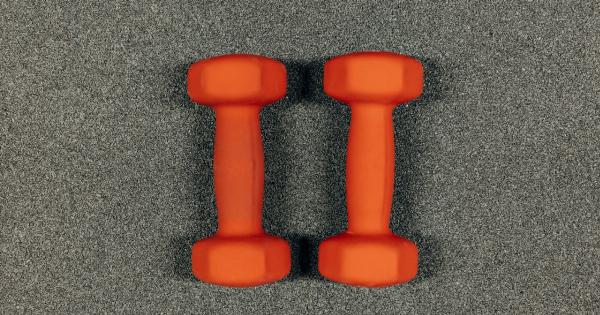Did you know that your body needs iron to carry oxygen to every cell in your body? Yet millions of people worldwide suffer from iron deficiency, which can lead to anemia and a host of other health problems.
The good news is that you can boost your iron intake and absorption through smart dietary choices and combinations. In this article, we will explore the science behind iron absorption and how you can optimize it for optimal health.
The Importance of Iron in the Body
Iron is an essential mineral that plays a vital role in the human body. It forms the core of hemoglobin, the protein in red blood cells responsible for transporting oxygen from the lungs to the tissues and organs that need it.
Without enough iron, your body can’t produce enough hemoglobin, leading to anemia, fatigue, weakness, and a lowered immune response.
In addition to hemoglobin, iron is also needed for other critical functions in the body, such as:.
- Myoglobin, the protein that stores and releases oxygen in muscles
- Enzymes involved in energy production and metabolism
- Immune and brain function
The Different Types of Iron
Not all iron is created equal. There are two primary forms of iron in foods:.
- Heme iron – found in animal-based foods such as red meat, poultry, fish, and seafood. Heme iron is more easily absorbed by the body than non-heme iron
- Non-heme iron – found in plant-based foods such as lentils, beans, spinach, tofu, and fortified cereals. Non-heme iron is less efficiently absorbed by the body than heme iron
Iron Absorption: The Science Behind It
Several factors determine how much iron your body absorbs from the food you eat. These include:.
- The type of iron (heme vs. non-heme)
- The amount of iron in the food
- The presence of other nutrients that enhance or inhibit iron absorption
Iron absorption from heme sources is typically around 25-35%, compared to only 2-20% from non-heme sources. However, most people get the majority of their iron from non-heme sources, making it important to know how to maximize absorption.
The human body has two main iron transporters: heme iron transporter 1 (HmT1) and divalent metal transporter 1 (DMT-1). HmT1 is responsible for absorbing heme iron, while DMT-1 transports non-heme iron and other divalent metals such as zinc and copper.
Ways to Maximize Iron Absorption
The good news is that several dietary factors can help enhance iron absorption, even from non-heme sources:.
1. Vitamin C
Vitamin C is a potent enhancer of non-heme iron absorption. It works by reducing the non-heme iron to a more absorbable form and by forming a complex that is easier for the body to absorb.
To boost your iron absorption, try combining plant-based iron sources with foods high in vitamin C. Citrus fruits, strawberries, kiwifruit, peppers, and broccoli are all excellent choices.
Alternatively, you can take a vitamin C supplement with your meal.
2. Meat, Fish, and Poultry
Eating foods high in heme iron can enhance the absorption of non-heme iron from plant-based sources. This is because heme iron appears to increase the efficiency of the non-heme iron transporters in the gut.
So next time you’re enjoying a vegetarian meal, consider adding a small amount of meat, fish, or poultry to your plate to boost your iron absorption.
3. Fermented Foods
Fermented foods contain probiotics, beneficial bacteria that can enhance iron absorption. This is because probiotics produce short-chain fatty acids that increase the acidity in the gut, creating a more favorable environment for iron absorption.
Sauerkraut, kefir, kimchi, and kombucha are all great sources of probiotics and can be enjoyed as a snack or added to meals.
4. Cooking with Cast Iron
Cooking with a cast-iron skillet can help increase the iron content of your food. This is because small amounts of iron are released into the food during cooking, particularly when cooking acidic foods such as tomato sauce or chili.
While the amount of iron absorbed from cooking with cast iron is relatively small, it can add up over time and is an easy way to boost your iron intake.
5. Avoiding Inhibitors of Iron Absorption
On the flip side, several dietary factors can inhibit iron absorption. These include:.
- Calcium – found in dairy products, calcium supplements, and antacids
- Tannins – found in tea, coffee, and red wine
- Phytates – found in whole grains, legumes, nuts, and seeds
- Oxalates – found in spinach, beet greens, and Swiss chard
While it’s important to consume these foods for their many health benefits, consider separating them from your iron-rich meals by a few hours, or pairing them with iron enhancers such as vitamin C.
The Bottom Line
Iron is a crucial mineral that plays many essential roles in the body, from oxygen transport to immune function and energy production.
While heme iron is more easily absorbed than non-heme iron, there are several dietary factors that can help enhance non-heme iron absorption, such as vitamin C, meat, fish, and poultry, fermented foods, and cooking with cast iron. Additionally, it’s essential to avoid inhibitors of iron absorption such as calcium, tannins, phytates, and oxalates, or pair them with iron enhancers for optimal results.






























